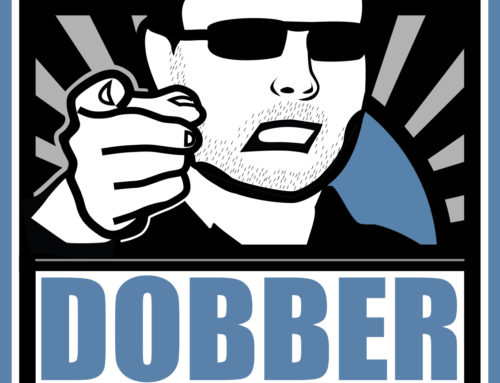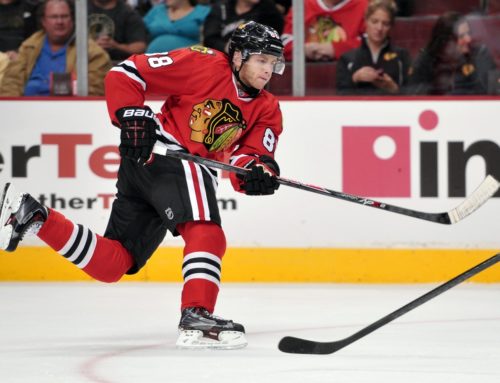
Welcome once again to “An Expert’s Audit”. This audit will also be posted here as well as on my fantasy hockey blog at www.fantasyhockey.hockeyanalysis.com . I also do weekly reviews of teams for people who email in to me for a look-see. These audits will continue to appear here monthly and if you’re interested in having your keeper team “worked over” then you can begin by emailing Dobber about it.
This is part two of an article in for An Expert’s Audit. My hope is that you can glean something beneficial out of this, particularly you folks in salary leagues.
Protecting the right guys
It is a common misconception that you just keep the best players. Well I suppose it is true that in a straight draft keeper league you do indeed keep the best players, but in a salary league you don’t protect the best players you protect the best value. There’s a big difference between spending a fifth of your cap on Sidney Crosby and having a minimal FA protection on Jonathan Toews.
Many leagues mix salaries and/or draft picks into the setup and your auction/draft strategy has to change from your standard redraft league. Should you use 1/5th of your cap to protect Sidney Crosby or do you protect Peter Mueller, Kyle Okposo, and Patrick O’Sullivan for the same price? You protect the kids and then you use the extra space in your cap to try and resign Sid for as close to the same price as last year. Protection in salary leagues isn’t about talent, it’s about value and it’s always better to have your cake and eat it too.
I got to auctioneer for a league last year and my jaw literally dropped as a buddy nominated and got his backup goalie for the minimum FA bid. Now he sits with Miikka Kiprusoff and Carey Price and it baffles me that nobody bid him up at that auction. He didn’t win the league this year but he’s got himself a cornerstone on the cheap for years to come. Obviously he’s going to keep Price and let inflation slowly raise his salary over the next decade. I mention this because keeping players is all about value and not about talent.
Learn about inflation
If you’ve never considered the concept of inflation in your salary league then I’d be betting that you’ve never won your salary league too. Inflation helps you in two ways in a salary league; economically, and scarcity-based.
Scarcity is easier to explain so I’ll briefly look at that. The principle is simple, if everybody is loading up on their goalies then you better be sure to get yours too. That’ll mean paying more than you projected to ensure you get what you need to compete in your league. It’ll also mean that you should be tiering every player you have interest in during your draft so that you don’t miss out on the any option you have listed at a higher tier.
It’s also a lot of fun to track where everyone has the holes in their lineup and then bid the exact amount they have left on their cap just to ensure that the other guy doesn’t get a bargain when he’s struggling to fill his lineup. It’ll mean tracking EVERYTHING during your auction, you need to know how many bucks each guy at the table still has on the table and you need to know what each guy still needs to fill out his roster. Programs can be developed that’ll do all that for you as you plug into your spreadsheet.
Economic based inflation is a concept that I stole from fantasy baseball. It should be noted that in this discussion you’ll have to “tweak” the numbers to fit your salary cap and what each guy will be keeping. The numbers WON’T come out as neatly as my example but if you do it right then you’ll have an advantage over the rest of your league. I searched around for a good example to put out here for you and the best example I could find for economic inflation was actually found in the fantasy baseball realm. Don’t ignore this portion of the article because you think baseball is too slow or whatever lame-ass opinion you want to throw out at me.
Any salary league has to take inflation into account during a draft. Prepare beforehand and it’s perfectly fine to show up at your draft with a spreadsheet and a calculator in addition to all your salary projections for the upcoming season.
Let’s assume that your league is a 12 teamer with 23 man rosters and a $260 salary cap, I use those numbers because they’re standard for fantasy baseball which is where I stole this concept from. Every fantasy mag puts out auction values for fantasy leagues so you’ll just need to account for inflation over the course of your auction. No you don’t want to just wing it, not if you want to win. Tracking your leagues economic inflation over the course of your auction will help you to evaluate the value of elite players in your auction, and that’s how you want to use it.
Everyone is going to keep guys, let’s say everyone keeps 10 guys. Since everyone has a $260 cap and everyone will need 23 guys that’ll mean that 12 guys chase 276 names (12 x 23 man rosters) and there’s only $3120 (12 x $260) to spend. Let’s say everyone keeps 10 guys and to keep numbers simple let’s further say that they are all kept at $10 apiece. Each team has spent $100 and the total spent in the league going into the auction is $1200 (12 x 100). Next, get out your fantasy auction values that you scooped off of whatever fantasy source you think is the smartest (insert Dobber’s fantasy guide commercial here) and note all the fantasy salary values they list, you’ll have to prorate accordingly if you don’t use a $260 cap, and you probably don’t. You’ll next need to total up the fantasy value in your league. Ok, are you ready to get all nerdy?
Look up everyone’s keepers to see what the auction value listed for them is. Let’s say you’re keeping Corey Perry for $10 (yes it can happen, you just have yourself a bargain) but he’s listed at $13 (I just made up that number). You add up what the auction value is, not the price you’re actually keeping him at. Let’s say that everyone is keeping $160 worth of value and the total value protected is $1920 (12 x $160) while remembering that the actual total money spent is actually $1200.
Subtract the value protected from $3120.
|
Total value pool |
$3,120 |
|
Value protected |
$1,920
📢 advertisement:
|
|
Value left |
$1200 |
Subtract the money spent.
|
Total money pool |
$3,120 |
|
Total money spent |
$1,200 |
|
Money left |
$1920 |
That means there is $1920 worth of money chasing $1200 worth of value, assuming that guys are auctioned for the prices set by the expert’s you trust. Now divide the money left by value left and you’ll get your inflation rate, 1920/1200 = 1.6
Confused? Well, that inflation rate is an important number come draft time. Let’s say that Evgeni Malkin was overpriced last year and he had to be thrown back into the auction for this upcoming season. Let’s also assume his fantasy guide auction value is $44 (another made up number) and your auction gets into prices in the 50’s for him before guys are dropping out since they see a $44 value and a $50 price tag. Since dollars are limited in the pool anyway you can let your inflation rate be in effect and realize that there’s only so many dollars to go chasing after elite options; multiply his listed dollar value by 1.6 (in this example only) and realize that his actual value in this league is $70. So … keep bidding, you’re actually getting a bargain on him since your inflation rate helps you realize his true value in THIS league. This inflation rate will help you evaluate superstars because prices get ridiculous and guys drop out of the bidding. You do NOT want to figure out an inflation rate on every auctioned player because you’ll end up burning up your cap space bidding on guys you can’t afford. But the important question becomes, do you want Evgeni Malkin when you have some bucks available or do you want Fernando Pisani when all the options are gone but you still have cash on the table?
Again guys, every inflation rate is different because every setup is different. It’s confusing. Use a calculator or if you can, use an abacus … nobody will have a clue what you’re doing (and wear a pocket protector, horned rims and Bryl-cream).
Conclusions
It’s a long way up the hill after you get smoked in a keeper league. It’s all CONSTANT evaluation, the eternal struggle to find value.
Who do you keep? You keep the guy that you CAN’T get back for the same price next year. You keep the guy who’s priced correctly too but it’s more important to keep value than it is to keep ability (at any price).
I got a bit mathy on you today and I’m the first to admit that it isn’t my strong suit but still, it’s necessary. It’s amazing to me that guys don’t track money spent in an auction and they don’t account for an inflation rate to better target the elite option. A little bit of prep time will take you a long way but there’s a danger too; obviously you have to guard against using your inflation rate too often and eating up your salary cap bidding on the best options available. In the end game you don’t want to have to search for minor leaguers or empty roster spots because you can’t afford to fill in your team. I’m just saying you also don’t want to leave money on the table; there are fewer things worse than that in an auction draft.





 CAR
CAR FLA
FLA EDM
EDM BUF
BUF TOR
TOR MTL
MTL ANA
ANA N.J
N.J S.J
S.J
